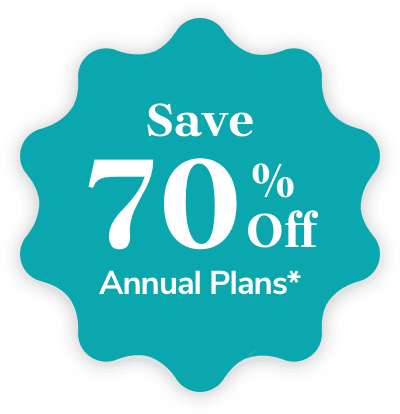How to Increase Online Sales by Understanding Customer Intent
March 3rd, 2014
A Q&A session to uncover what clients look for in a website
We often interview photographers on the subject of how people can improve their business — from shooting to marketing, right down to selling your photos. But it’s also important to consider how clients make their purchasing decisions. Here, we interviewed magazine editors, art buyers, individuals looking to hire a photographer, and people looking to purchase photos online to find out what makes them buy and what makes them leave. We gain a little insight into increasing your online sales by picking up patterns these individuals love most. The secret: it all begins and ends with a spectacular website.
How Magazine Editors Find Photographers
1) What is the first thing you look for on a photographer’s website?
Galleries and portfolios are key, for features especially. The homepage is the first impression and should reflect who you are as a photographer. “I like to see one dynamic, representative image there or a no-music slideshow with large images,” says the editor of a leading UK photographer magazine.
2) What makes you explore a website further?
Easy, fuss-free navigation. “It is surprising how some people make finding images quite difficult. I also feel sometimes there are too many photos up — to have 12 brilliant shots is much more useful than 24-36 images with mediocre ones mixed in,” says one editor. Also, the design is important. “So many photographers have not invested the time they need in their website design. If I were a potential client, I might have moved on to someone else.”
3) What gets you excited about discovering a new photographer?
“Discovering a talented new photographer is a little like finding a four-leaf clover,” says one editor. “I know there may be new opportunities ahead for that photographer if we decide to feature him or her.”
4) What do you look for when exploring a new portfolio?
Great images and time well spent on a website are the highlights. “I love to see a cohesive body of above-par work,” says one editor. “When someone has devoted time to choosing the perfect images for their portfolio, it makes all the difference.” When photographers pay attention to detail and excellence in their photography, it shows the viewer that they care deeply about their work.
5) What are photographer or portfolio-related deal breakers?
If your website is designed like an HTML page from the ‘90s with old-school type styles and design, you more than likely won’t have any editors contacting you. “When we feature a photographer, we let readers know where they can find more of that photographer’s work by referring readers to their website,” says one editor. Also, less is more. “Slow-loading images, music, videos, having to register, too many average pictures — anything that consumes time is a turnoff,” says one editor.
6) How do you determine if a photographer will fit if they have no editorial section?
An editorial section is not required if you want to be featured in a magazine; however, you need to showcase your images and tell the story of who you are as a photographer. “Anyone we feature must have a message that our readers can use. If we are particularly interested, we will call or email.”
7) What do you look for in a blog?
Blogs are important, but not essential, to have because editors read enough as it is and may only want to look at the images. However, it may help push their decision along when looking at several options. “Their blog might help us make that ultimate decision by showing us a little more of the personal side and some of their everyday work or professional passions.”
8) What makes you return to the site?
“Images that fascinate, amuse, astound, or warm my heart,” says one editor. But overall, it is important to have easy navigation and a simple website. “All I want is good, still images,” says another editor. “Once we have featured a photographer, I don’t need to revisit a site.”
9) How important is it to belong to industry groups and attend events?
Although being a member of groups and going to events is important to get your name out there, it is not a requirement. “Of course we love PPA member photographers and Imaging USA speakers, but we also strive to include a broad spectrum of highly skilled photographers regardless of industry affiliation,” says one editor. “We are always looking for diversity in the images we publish.”
10) What do you look for when a photographer comes to you to get featured?
If you’re going to take the time to pitch to an editor, you should polish your pitch as much as possible before emailing. “Sometimes a photographer pitches a great idea at just the right time, or tells us they want to share the new business idea that’s taking off for them, or suggests something that fits well into an issue theme down the road,” says one editor. But you need to do more than just send a link to your portfolio. “I’d prefer photographers to send their very best six low-res JPEGs to my email address. If I see potential, I will visit their website.” Also just emailing the subject line: ‘I want to be featured’ without any effort won’t get you far. “I will devote an equal amount of energy to my consideration as they did to their pitch letter,” says one editor.
How Art Buyers Find Photographers
1) What source(s) do you use to find photographers?
A lot of the photography is sourced from established archives, agents, or publishers for art buyers, but sometimes they reach out directly to photographers. One art buyer scours blogs regularly, such as Colossal, Cool Hunting and Juxtapoz magazine, as well as industry/portfolio sites, such as Zenfolio, 500px, and Art Limited. “Sometimes I will poke around on Pinterest to see what’s trending there,” says one US-based art buyer.
It’s important to find your niche and make yourself stand out as a photographer. “It sounds a little hokey but I’m looking for something unique, something that differentiates it. We have over 600,000 photographic images on our site already, so when I’m going out to handpick a photographer, I’m looking for somebody that’s got something that no one else has. It may be a unique technique, or a visual style, or a cinematic quality to their work. It has to immediately grab me and make me want to explore more,” says one art buyer.
2) What is the first thing you look for on a photographer’s website?
The gallery is the first thing, and then a photographer’s credentials. “The CV, statements, and whatnot are important and I will look at those, but the first thing I want to do is explore the visual language of the photographer.”
3) What do you look for when exploring a new portfolio?
Just as with the magazine editors, a less-is-more approach to the website design is preferable. “I like portfolios that are clean and simple to use. Lots of bells and whistles (, music, overly designed interfaces) are a major turnoff. Get the work front and center and let it shine,” says one art buyer.
Getting a sense for a photographer’s taste and editing skills once you visit the site is an important factor. “I like to judge the photographer’s sense of curation and self-editing, this is usually a big indication of how mature they are as an artist,” says one top art buyer. “If the works are very uneven, I might shy away from approaching them even if there’s some really strong pieces mixed in there.” Also, a statement of who you are should be strong, short, and sweet. “We need to understand why they’re creating.”
4) What are the photographer- or portfolio-related deal breakers?
There aren’t many definitive turnoffs — you just have to show your worth. If you don’t have years of experience on your CV, make up for it by having a large social media presence or showcasing the best possible quality work on your website. “I’m generally looking for someone who has some experience in the fine art side of the business, whether it’s juried competitions, exhibits, etc. so a CV that contains nothing in that area means I probably won’t approach them, unless I am truly blown away by their work.” says one art buyer.
5)What makes you return to a website?
“It’s really about the work, so if a photographer I have my eye on is updating with their most recent works I’ll keep coming back,” says one art buyer.
6) What do you do when a photographer comes to you to get featured?
Because art buyers have many connections, they’re used to a swarm of photographers approaching them to get featured. “Most often it’s not something I’m interested in picking up directly, but if there’s an agency or publisher that would be a good fit for their work I’ll refer them over.”
How Individuals Find Photographers
1) What is the preferred method of discovering a new photographer?
Just as with purchasing a photo, social media, Google searches, and referrals are the preferred methods of those in search of a photographer. “Typically, I’ll see photos of friends that I admire and ask them who took it, and then I’ll keep them on my sort list for the next time I need a photographer,” says one photographer hunter.
Another browser mentioned, “Just like any marketing expert would tell you, Google searches and friend or family referrals are what people use most in the search for that perfect photographer. “I would do a Google search for sites that sell photography or specific photographers. I’d also try the most popular photography forums to find photographers I like.”
2) What do you look for in a new portfolio?
Letting your personality, style, and brand shine through your photos communicates who you are and what you do as a photographer. If you are a pet and wedding photographer, make sure to display both genres. If you do 80 percent weddings and 20 percent family photos, make that obvious in your site by showcasing those photos. You want to clearly communicate who you are through your website. It’s also smart to showcase different types of shoots, so that your website reflects your versatility. “I want personality to come through in the photos. It’s important to me that you can tell who the subjects are and what they’re all about. I hate photo shoots that all look the same,” says one photographer hunter.
Finding your niche and standing out from the crowd will draw people in. What makes you different? Why do you shoot the way you do? What’s the story behind your photos? “I want to understand why each photo was taken,” says one client. Also, representing your style in a big way is important, so others who have the same tastes as you will relate. “The main quality I’d be looking for are unique and dramatic photos that match the décor of my home.”
3) What is the first thing you look for on a photographer’s website?
Design and examples of work are always the main things people will remember about your website. Pricing is second.
It may sound obvious, but having great examples of your work at the front and center of your website is what will grab potential clients’ attention. “If they can’t curate their own work to showcase the best, they likely will have a lot of mediocre work for me to sort through,” says one client. “For their individual photos it is a two-prong approach: I want to feel like I can relate to that person if their vision and labor of love will be hanging on my walls. Also, if they don’t have a good photo of themselves, I’m unlikely to trust their artistic vision.” It’s also good to have your pricing easy to find, as money is a major factor is any client’s buying decision.
4) What makes you explore a website further?
You want your visitors to stay awhile once they’re on your site, instead of clicking and leaving. That’s why aside from the design of the website, user-friendly navigation will keep your visitors wanting to explore every page. Your contact info, pricing, and examples should be easy to find so people don’t get frustrated. “I have a short attention span, and if I can’t figure out what to click on right away, I just leave the site,” says one browser. Also make sure your photos are clean, not blurry, which may communicate unprofessionalism or laziness.
The less fuss the better. “Easy-to-follow layout that doesn’t make me hunt for stuff,” is what one photo-lover looks for. “If I wanted to continue searching, I’d still be on Google.” And categorizing yourself in a genre or group of other similar photographers can help when people are browsing your work. If you have a network of photographers to back you up, clients will trust that you are established enough to be in any group at all.
5) Do you prefer slideshows or individual images?
Individual images. If you wish to host a slideshow, make sure to have the option to browse the images individually. Although slideshows are popular, they aren’t everyone’s cup of tea. Sometimes they are too slow in transition and won’t load correctly — and this is where people get impatient. “I prefer to have thumbnail views of photos and select the ones I like,” says one photo curator. It’s also smart to have the option to view them as either a slideshow or thumbnails.
6) What are the photographer- or portfolio-related deal breakers?
Bad design and a cluttered website are no-nos. Also, seeing the same types of photos over and over can get exhausting. “I hate to see repeated poses with multiple couples,” says one individual. “If they do the same thing over and over again with their clients, I’m not interested.” Make sure to mix things up and display a versatile collection of photos.
If you can remember one thing from this article, it’s this: less is more. “Too much flash or similar that impacts the focus on photography will send me running for the hills,” says one browser. “Keep it clean!”
7) How important is it to have a blog?
It isn’t a requirement to have a blog on your website and nor may it increase online sales, but any business-savvy photographer will have one. Blogs are an easy way to keep clients in the loop, display snippets from shoots, and show your personality to clients. “If I’m following a photographer closely, a blog is nice to show the latest work, gallery showings, etc. But getting to the photos and updates is the most important,” says one browser. It is wise to keep it updated with fresh content, even if it isn’t always the most important aspect.
8) What questions do you ask a photographer before hiring them?
Pricing, turnaround time, and what’s included in the packages should be communicated from the get-go. “Is getting the CD of images an option? My family and I love actually having all of these images on our computer that’s easily accessible in case we ever want to make cards, books, etc,” says one photographer hunter.
Photographers should also be sure to ask clients questions on pricing, shipping, and examples of available work. These should be ready to go at a moment’s notice if a client requests it to increase online sales when they least expect it.
9) Is input from family/friends important to you?
Feedback from friends and family is always important. “But once we’re shopping for a wedding photographer, I’d prefer them to step off and let us make our own decisions,” jokes one man.
Referrals are important, and so is feedback from family and friends. Family members and closer friends are the ones who are most honest, after all. “I would like to share with others before a purchase; happy wife equals a happy life,” jokes one browser. “Anything that allows me to easily share my selection with the people that matter would make me more likely to come back to the website.”
10) How important is the design/style of the website?
“VERY important. I can’t stress this enough. I feel like it’s a reflection of the photographer’s personality and working style. A cluttered, messy photographer isn’t going to give me the type of results and experience I’m looking for,” says one individual.
Everybody has different tastes, and different design and style preferences. So it’s important to display your personal style on your homepage to communicate your brand to your audience right away. The main things to make sure to have are contact information, sample work, and a good design. “A simple, elegant portfolio with easy navigation is the best way to go,” says one browser.




